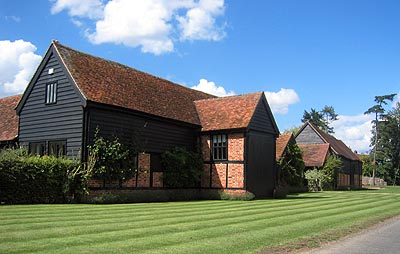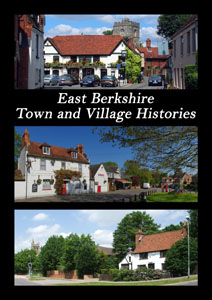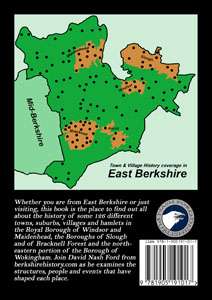 |
 |
||||||||
|
|
At the time of the Domesday Book (1086), Shottesbrooke was owned by Alward, the Anglo-Saxon royal goldsmith, and it was there that the Anglo-Saxon royal regalia were forged, probably from the early 10th century. It was his skilled craft that enabled Alward to keep his lands under the Norman kings. The local people produced charcoal for the gold smelting in the Great Wood and a lost medieval village, called Shottesbrooke Auri-Fabrorum, grew up on the Broadmoor Road, near the entrance to Shottesbrooke Park. The most notable features of Shottesbrooke today are the manor house and the former Collegiate church in the park. The latter is one of the most idyllic in the county: a cruciform building, entirely of the decorated Gothic style, put up in one go in 1337 by Sir William Trussell, traditionally in thanks for beating his drink problem. He had served with King Edward III in his Scottish Wars and, having made many important and influential friends, he persuaded them all to contribute to the founding of an ecclesiastical college at Shottesbrooke. Some of their coats of arms can still be seen in the windows of the church, which is thought to have been built by masons ‘borrowed’ from Salisbury Cathedral. The local brazier is said to have fallen and been killed whilst placing the weathervane on the spire. A college was like a monastery with priests instead of monks. Shottesbrooke was quite a small complex, with just a warden, five chaplains and two clerks to pray for the souls of the King and the Trussell family. There were more buildings for them over the wall in the area of the old farm: at least two spacious halls with parlours and high chimneys, where only a 15th century cottage survives today. These buildings were once connected to the church by a covered walkway to the little blocked-up doorway in the church’s south transept. Inside the church are some wonderful medieval memorials. The founder’s superb decorated double monument fills the main wall of the north transept. Did it once have wooden effigies under the arches? One of the college chaplains lies in his stone coffin, and there are several fascinating memorial brasses. These include Trussell’s daughter, who was one of the Pembridges from Tong Castle in Shropshire. Another, a stunning depiction of a 14th century priest and layman, has no inscription but is believed to represent a rich London fish-merchant called William Frith (died 1386) and John Bradwell, the Warden of Shottesbrooke, who may have been a relative. The present Shottesbrooke House, next to the church, is early Tudor, extended a century later with bricks from the lake and gothicized in 1807. Its most famous resident was probably Francis Cherry, who was a pious man but a staunch Jacobite. He was therefore no great friend of the King, William III, who he saw as a usurper. The two, however, did share a great love of hunting. Cherry was a famous horseman and the King, who often met with his hounds at Shottesbrooke, became his rival. The former would risk his life at the most difficult leaps for the mere chance that the King would follow and break his neck. Later the house was, for many generations, the home of the Vansittart family, rich Dutch merchants who made a fortune in Poland. It was eventually inherited by the Smith family, who were Vansittart cousins, and they still live there today. The late Sir John Smith MP founded the Landmark Trust, a building conservation charity, at the farm next to the church. Down the lane opposite the park entrance, you get a glimpse, between the barns, of Smewyn's Manor. This moated 15th century house was supposedly favoured by Prince Arthur, elder brother of King Henry VIII, as a hunting lodge. It was later the home of the late 17th century theologian, Henry Dodwell, a great friend of Francis Cherry, who is buried in the church. Read more history of Shottesbrooke in David Nash Ford's book, 'East Berkshire Town and Village Histories'. Click to Order direct from the Author.
|
||||||||
| © Nash Ford Publishing 2001; Revised 2020. All Rights Reserved. | |||||||||



 Shottesbrooke
Shottesbrooke
